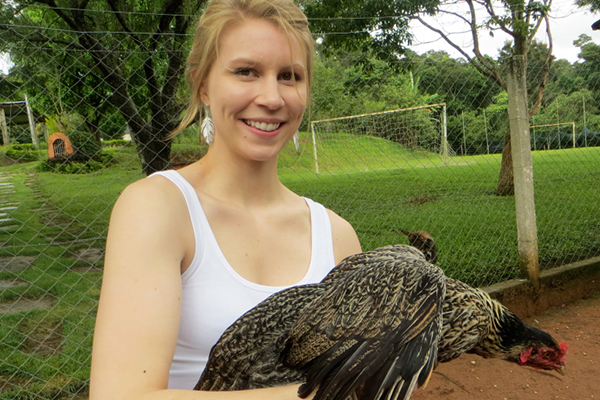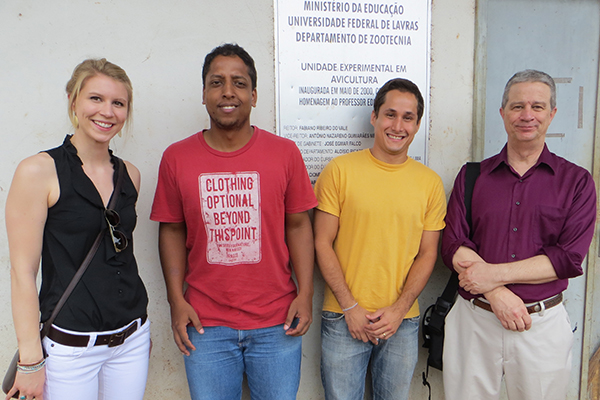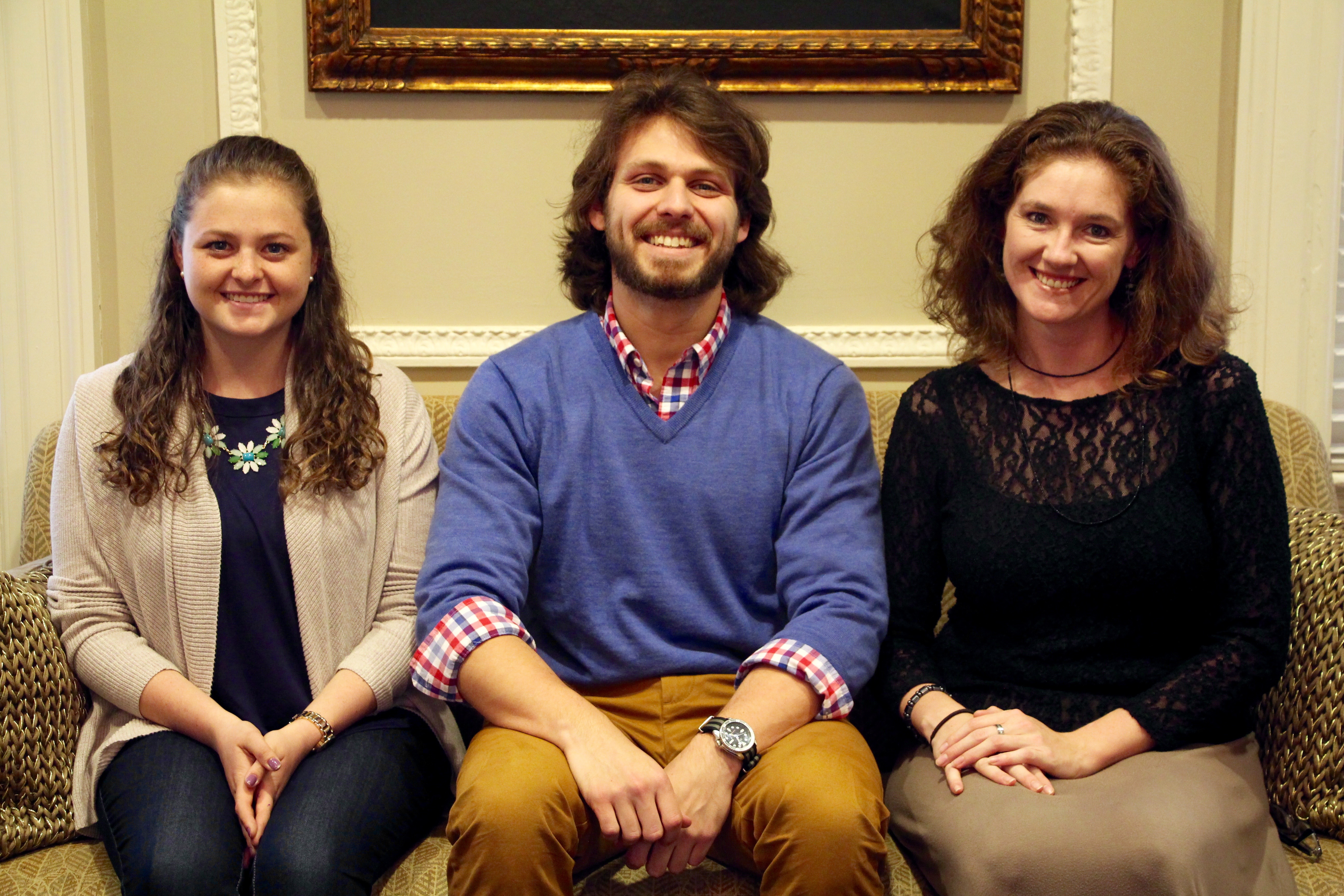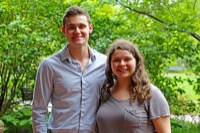


Brazilian collaboration
UD grad student sets up collaborative research with Brazil's UFLA
1:20 p.m., May 1, 2013--During spring break, University of Delaware graduate student Allison Rogers spent a week at Brazil’s University Federal de Lavras (UFLA) to secure future collaborations for research on broiler chickens and to assist Carl Schmidt, associate professor in the Department of Animal and Food Sciences, in his research on the global genomic diversity of chickens.
A self-professed “bird lady” who was named a Plastino Scholar in 2011 and traveled the country discussing the importation and smuggling of parrots into the United States, Rogers was able to set up a collaboration with researchers at UFLA that will see her return to the University in June. Her research deals with studying “the effect of alternative lighting technologies such as LED and cold cathode fluorescent (CCFL) light bulbs on the growth and performance of broiler chickens.”
Global Stories
Fulbright awards
Peace Corps plans
Rogers, a master’s degree student studying animal science in the laboratory group of Eric Benson, associate professor of animal and food sciences, and Robert Alphin, instructor in the department and manager of the Allen Laboratory, explained that incandescent light bulbs traditionally have been used in chicken houses but now growers are moving toward higher efficiency light bulbs and they want to be able to determine whether or not these new lighting technologies have any effect on the growth of their birds, which would impact them economically.
“Our interest in Brazil, particularly in the region that we’re visiting, is that they’re able to raise their birds in completely open houses,” said Rogers, explaining that the chickens are “enclosed within a house but they have enormous windows that are completely open -- they have natural ventilation and natural lighting. That is so different from what we have, which is completely enclosed, artificial ventilation and artificial lighting. I’ll be collecting blood samples upon my return, to compare relative stress levels between birds raised under natural light versus birds raised under artificial light.”
Schmidt added that when Rogers goes back in June, her collaborators at UFLA will have “set up a flock for her. They will grow the chickens for five weeks and in June she will begin sampling the birds to evaluate in a fairly straightforward way their immune function and stress levels, and to be able to compare that with the data she’s collected on her own flocks here in Delaware.”
As for this most recent trip, Rogers was assisting Schmidt with his research, helping to collect genetic samples from backyard chickens that will help aid his studies on the genomics of the common chicken and how they respond to different environments -- such as very hot and high altitude environments -- with the hope that the genetic information will allow livestock breeders in the United States to improve their flocks.
“We took samples using a piece of paper that has been treated so that you can take one drop of blood from an animal and put it on this piece of paper and it will stabilize the sample and destroy any viruses or bacteria. It allows you to keep that stabilized sample and then analyze it later on,” Rogers explained.
As one who is enthralled with exotic species of birds, Rogers said that just because she was studying chickens in Brazil didn’t mean that she was not able to see exotic species — sometimes getting to do so without even leaving the UFLA campus. “I got made fun of by Dr. Schmidt because at one point we were on the campus and a toucan flew over head and I was just like, ‘Toucan!’” said Rogers. “It was so exciting to see these species that you would never see in the United States and the people in Brazil are just as excited about them as we are, which is really wonderful. They say they’re really proud that the university has kept enough foliage and enough resources for these birds to still be able to live in this quasi-urban setting. That was really important to them.”
Rogers added that she saw similarities between UFLA and UD’s College of Agriculture and Natural Resources, making for a seamless collaborative environment. “UFLA is an agriculturally and historically based university and so we felt very at home when we arrived. There are very strong programs there for horses as well as cattle and so we really just kind of felt at home. Everyone was very welcoming. The students that helped us were just wonderful and so caring.”
About the partnership between UD and UFLA
In 2011, CANR and the College of Arts and Sciences received a $150,000 grant from the U.S. Department of Agriculture’s National Institute of Food and Agriculture and International Science and Education program (USDA-NIFA-ISE) to continue on a three-year partnership with UFLA.
The hope of this partnership is to establish both long-standing academic programs and research partnerships, with both institutions helping each other in those areas in which their research overlaps.
Article by Adam Thomas









